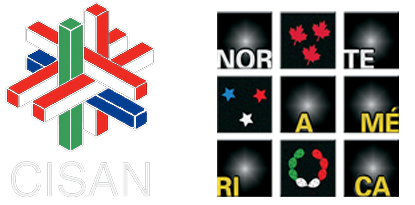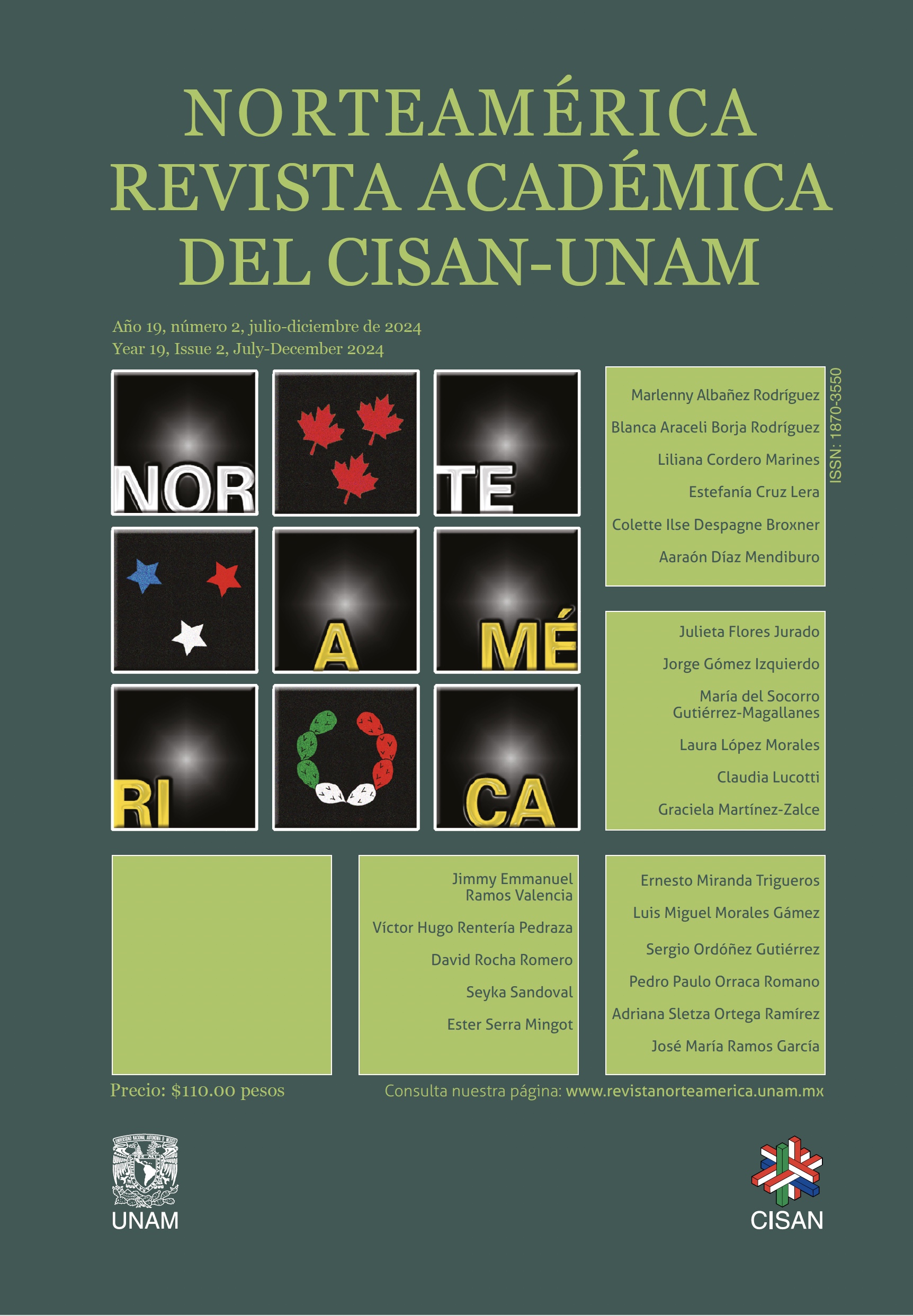Abstract
Productive specialization in Mexico has been significantly shaped by comparative advantages in trade with the United States within the framework of the USMCA (United States-Mexico-Canada Agreement). This paper explores how this specialization has transformed the productive structure, including its technical and organizational foundations, and the evolving standards for labor demand. We argue that Mexico’s current specialization in vegetable production is driven by competitiveness that relies on increasingly scarce productive resources, which raises concerns about the sustainability of this productive model. Our analysis reveals that while there has been a notable increase in specialization towards specific agricultural crops, the revealed comparative advantages and the complexity index indicate a focus on low-value activities. This trend contributes to the disarticulation of the regional economy and presents challenges for achieving productive scaling through robust economic development. Furthermore, the rising water stress in key agricultural regions highlights the contradictions inherent in the productive specialization models proposed by classical, neoclassical, and structuralist economic theories.
References
Aguilar Soto, C. & Romero Ibarra, M. E., 2011. Organización empresarial y agricultura comercial. La Confederación de Asociaciones de Agricultores del Estado de Sinaloa,1930-1960. América Latina en la Historia Económica, jul/dic (36).
AMHPAC, 2017. Agricultura protegida en México. [En línea]
Available at: http://www.amhpac.org/es/index.php/homepage/agricultura-protegida-en-mexico [Último acceso: 03 12 2017].
SIE-Banxico, 2023. Estructura de información (SIE, Banco de México) [WWW Document]. URL: https://www.banxico.org.mx/SieInternet/consultarDirectorioInternetAction.do?accion=consultarCuadro&idCuadro=CE122&locale=es (accessed 4.12.2023).
Becker, W. & Dietz, J., (2004), “R&D cooperation and innovation activities of firms--evidence for the German manufacturing industry”, Research Policy, 33(2), pp. 209-223, https://doi.org/10.1016/j.respol.2003.07.003
Bergstrand, J.H., 1990. The Heckscher-Ohlin-Samuelson Model, The Linder Hypothesis and the Determinants of Bilateral Intra-Industry Trade. Econ. J. 100, 1216–1229. https://doi.org/10.2307/2233969
Bolívar Zapata, F. G., 2017. Transgénicos. Grandes beneficios, ausencia de daños y mitos. México: AMC, IBt-UNAM, ECN.
Breitenbach, M.C., Chisadza, C., Clance, M., 2022. The Economic Complexity Index (ECI) and output volatility: High vs. low income countries. J. Int. Trade Econ. Dev. 31, 566–580. https://doi.org/10.1080/09638199.2021.1995467
Cámara de Diputados (2000), ¿Cuánta Liberalización Aguanta la Agricultura? Impacto del TLCAN en el sector agroalimentario. México: Cámara de Diputados, LVII Legislatura, Comisión de Agricultura; Universidad Autónoma de Chapingo.
Carton de Grammont, H., 1986. La presencia norteamericana en el agro sinaloense en la pimera mitad del siglo XX. Estudios Fronterizos, IV(10-11), pp. 43-61.
Carrillo Rojas, A. (2007). Apuntes para la historia de la empresa hortícola en el valle de Culiacán. En M. Vidales Quintero, R. Rodríguez Benitez, & (coord), Contribuciones a la historia económica, social y cultural de Sinaloa (págs. 17-36). Culiacán: Universidad Autónoma de Sinaloa.
Castro Rosales, G. & Fuentes, E., 2017. Índices de concentración y especialización de la producción agropecuaria en los Estados Mexicanos para los años 1993, 1998, 2003, 2008 y 2013. Revista Mexicana de Agronegocios, Volumen 41, pp. 696-707.
Cohen, W. M., & Levinthal, D. A. (1990). Absorptive capacity: A new perspective on learning and innovation. Administrative science quarterly, 35(1), pp.128-152. https://doi.org/10.2307/2393553
Contreras-Castillo, J.M., Leos-Rodríguez, J.A., (2021). Nota metodológica sobre el índice de ventaja comparativa revelada normalizada, [WWW Document]. edu.mx, URL: https://repositorio.chapingo.edu.mx/server/api/core/bitstreams/13cdaa97-c4e0-4dd8-bb07-de713c63f55c/content (accessed 11.25.2022).
Cortés-Torres, Iván (2016), “La crisis alimentaria Mundial: causas y perspectivas para su entendimiento”, Razón y Palabra 20(94), pp. 602–621.
Diaz, A., O'Brien, Tim M; (2004), Mejorando la competitividad y el acceso a los mercados de exportaciones agrícolas por medio del desarrollo y aplicación de normas de inocuidad y calidad: el ejemplo del espárrago peruano, Instituto Interamericano de Cooperación para la Agricultura (IICA), https://repositorio.iica.int/handle/11324/6929
Dosi, G., 1982. Technological paradigm and technological trajectories. A suggestive interpretation of the determinants and directions of technological change. Research Policy, 11(3), pp. 147-162.
ERS-USDA, 2023. Vegetable Import Competition [WWW Document]. URL: https://www.ers.usda.gov/amber-waves/2021/november/u-s-fresh-vegetable-imports-from-mexico-and-canada-continue-to-surge/ (accessed 6.01.2023).
Fritz, B.S.L., Manduca, R.A., 2021. The economic complexity of US metropolitan areas. Reg. Stud. 55, 1299–1310. https://doi.org/10.1080/00343404.2021.1884215
Gulati, R. (1995) “Social Structure and Alliance Formation Patterns?: A Longitudinal Analysis”, Administrative Science Quarterly, 40, 619-652, http://dx.doi.org/10.2307/2393756
Held, D., McGrew, A., Goldblatt, D., & Perraton, J. (1999). Transformaciones globales. Política, economía y cultura. Oxford: University Press.
Hennart, J. F. (1988). Transaction Costs theory of equity Joint Ventures. Strategic Management Journal, 9(4), 361-374
Hausmann, R., Hidalgo, C., Bustos, S., Coscia, M., Simoes, A., & Yildirim, M. (2013). The atlas of economic complexity: Mapping paths to prosperity. MIT Press. https://doi.org/10.7551/mitpress/9647.001.0001 [WWW Document]. URL: https://directory.doabooks.org/handle/20.500.12854/78522
INEGI, 2013. Cuadros de Oferta y Utilización y Matrices Insumo-Producto Multi-Estatales de México [WWW Document]. URL https://www.inegi.org.mx/investigacion/coumip/#tabulados (accessed 4.6.2020).
INEGI, Sistema Automatizado de Información Censal (SAIC), 2019, [WWW Document]. gob.mx. URL: https://www.inegi.org.mx/app/saic/ (accessed 4.10.2023).
INEGI, Directorio Estadístico Nacional de Unidades Económicas (DENUE), 2022, [WWW Document]. gob.mx. URL: https://www.inegi.org.mx/rnm/index.php/catalog/764 (accessed 4.10.2023).
Kogut, B. (1988) “Joint Venture: Theoretical and Empirical Perspectives”. Strategic Management Journal, 9, 319-332. https://doi.org/10.1002/smj.4250090403
Levitt, B. & Maech, J., (1988), Organizarional Learning, Annual Review of Sociology, 14(1), pp.319-338, doi: 10.1146/annurev.so.14.080188.001535
Miotti, L., & Sachwald, F., (2003), Co-operative R&D: why and with whom?: An integrated framework of analysis, Research Policy, 32(8), pp-1481-1499, https://doi.org/10.1016/s0048-7333(02)00159-2
Nelson, R. & Winter, S., 1982. An Evolutionary Theory of Economic Change. Cambridge, Massachussets and London, England: The Press of Harvard University Press, .
OEC, 2022. Métodos | OEC [WWW Document]. OEC - The Observatory of Economic Complexity. URL https://oec.world/es/resources/methods#economic-complexity (accessed 6.27.2023).
Pisano, G. P. (1990). The R&D Boundaries of the Firm: An Empirical Analysis. Administrative Science Quarterly, 35(1), 153–176. https://doi.org/10.2307/2393554
Powell, W. W., Koput, K. W. & Smith-Doerr, L., 1996. Inter-organizational collaboration and the Locus of Innovation: Networks of Learning in Biotechnology. Administrative Science Quarterly, 41(1), pp. 116-145.
Ramírez, F.J.V., Jiménez, J.I.G., 2020. EL TEOREMA DE HECKSCHER Y OHLIN Y LA INDUSTRIA MEXICANA DE LAS NUECES DE NOGAL (Carya illinoinensis) 46.
Rinconada Carbajal, F., García Fernández, F., Serna Hinojosa, J.A., Rinconada Carbajal, F., García Fernández, F., Serna Hinojosa, J.A., 2022. Especialización y ventaja comparativa del sector citrícola en México: 1990-2018. Econ. Teoría Práctica 155–174. https://doi.org/10.24275/etypuam/ne/562022/rinconada
Rosales-Inzunza, S.& López-Leyva, S., 2008. “Base exportadora y sistema de innovación regional. El caso de Sinaloa”. Región y Sociedad, XX(43), 163–187.
Sandoval, S., 2012. Condiciones histórico-estructurales de los productores de hortalizas sinaloenses en la cadena de valor 1900-2010. Región y Sociedad, XXIV (54), pp. 231-259.
Sandoval, S.V., 2019, Upgrading & Competencia: Reflexiones para firmas y países en desarrollo, Revista Economía UNAM, 16(48), pp.213-238 DOI: https://doi.org/10.22201/fe.24488143e.2019.48.497
Sandoval, S.V., Borja, B.A., 2023. La naturaleza de los vínculos y el escalamiento en el subsector hortícola en México. Economía, Teoría y Práctica.
Secretaría de Economía, 2021 Sistema de Consulta de Información Estadística por País [WWW Document]. gob.mx. URL: http://www.economia-snci.gob.mx/sic_php/pages/estadisticas/ (accessed 4.10.2023).
SENASICA, 2023. Exportación de Productos Agrícolas [WWW Document]. gob.mx. URL: http://www.gob.mx/senasica/acciones-y-programas/exportacion-de-productos-agricolas-149565 (accessed 4.12.2023).
SIAP-SAGARPA. (2017). Servicio de Información Agroalimentaria y Pesquera. [WWW Document]. gob.mx. URL: https://www.gob.mx/siap#1410 (accessed 11.05.2018).
SIAP-SAGARPA, 2023. Producción Agrícola [WWW Document]. gob.mx. URL: http://www.gob.mx/siap/acciones-y-programas/produccion-agricola-33119 (accessed 4.12.2023).
Tripsas, M.; Stephan Schrader & Maurizio Sobrero, 1995, “Discouraging opportunistic behavior in collaborative R & D: A new role for government”, Research Policy, 24(3),pp. 367-389, ISSN 0048-7333, https://doi.org/10.1016/0048-7333(93)00771-K.
Vargas-Hernández, J.G., Vargas-González, O.C., 2021. Renegotiation of TMEC (USMC) on the Agricultural Exports of Sinaloa 39–54. https://doi.org/10.4018/978-1-7998-5886-7.ch003
Williamson, O. (1989). Las instituciones económicas del capitalismo. México: Fondo de Cultura Económica.
World Resources Institute, 2023. WRI Data Mexico [WWW Document]. URL https://wrimexico.org/resources/data_sets (accessed 4.12.2023)

This work is licensed under a Creative Commons Attribution-NonCommercial-NoDerivatives 4.0 International License.
Copyright (c) 2024 Blanca Araceli Borja Rodríguez, Seyka Verónica Sandoval Cabrera



